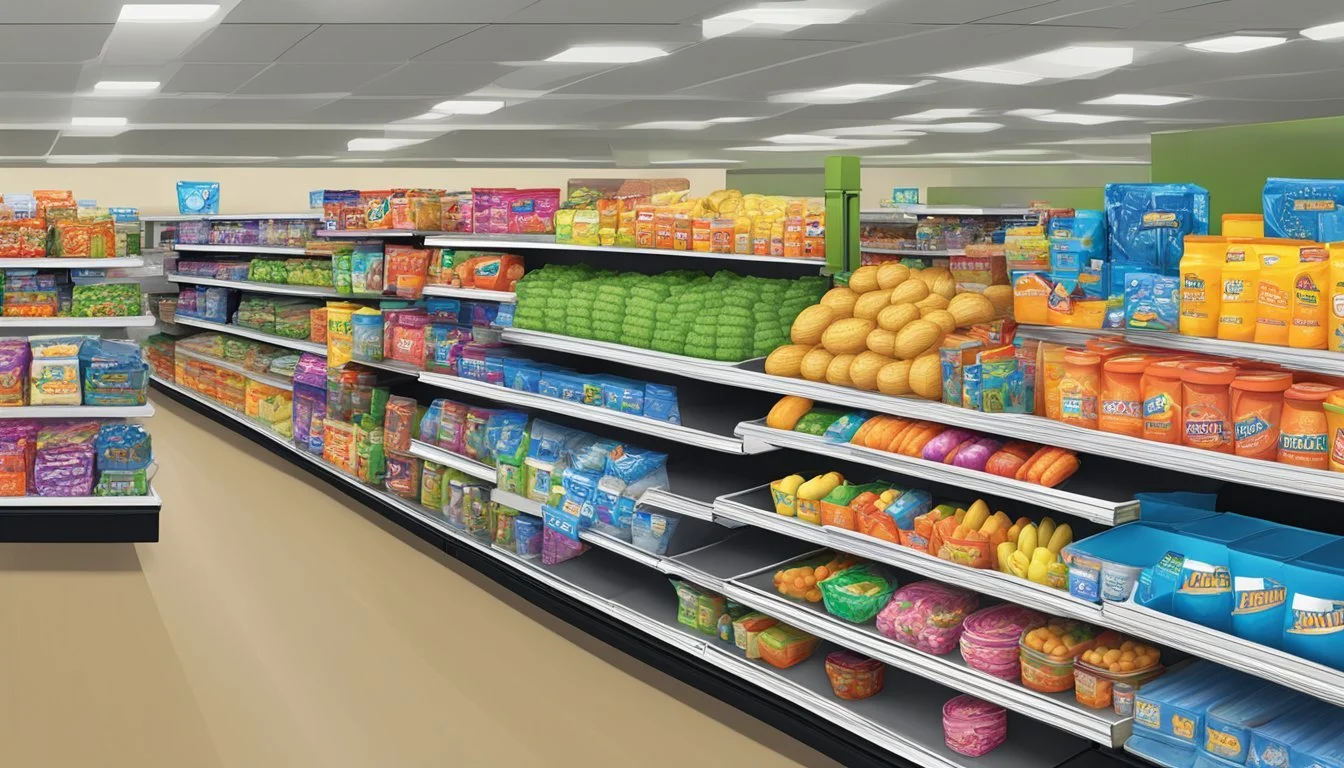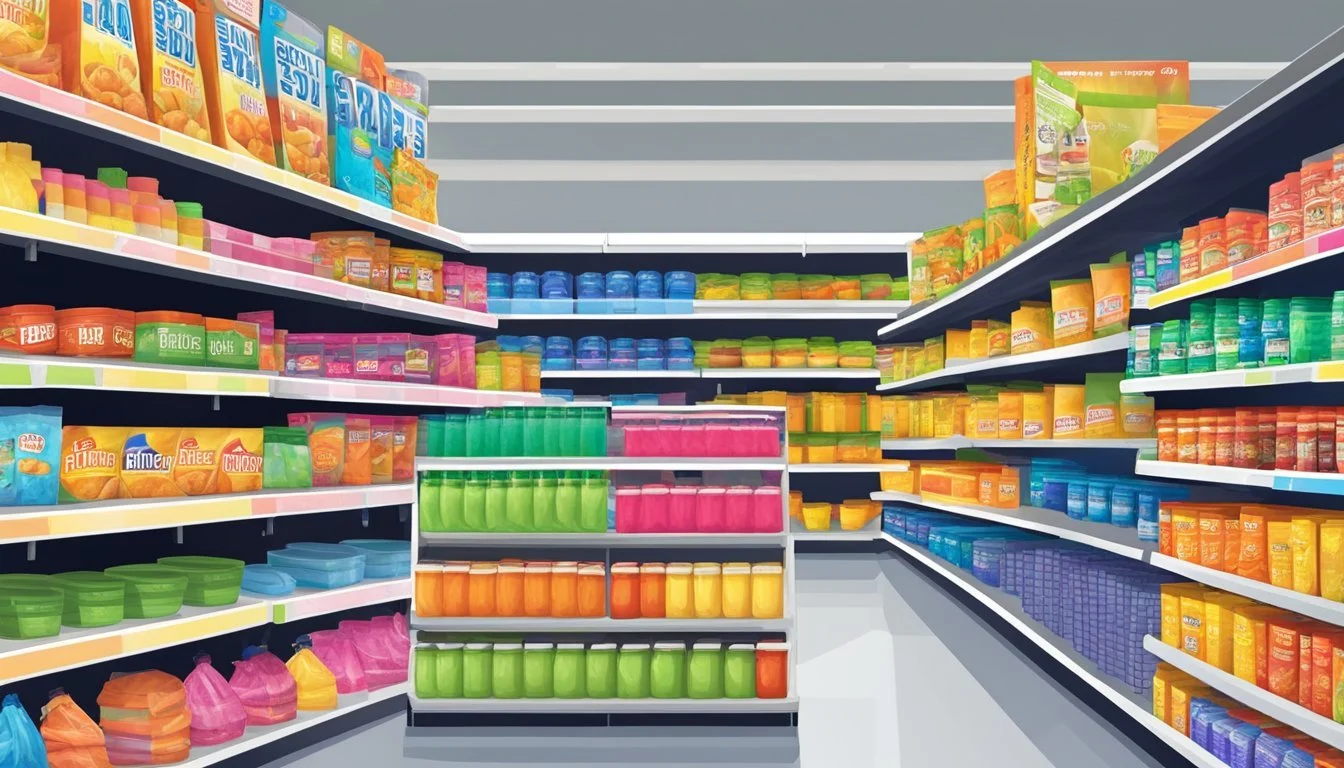Is Five Below Cheaper Than Lucky Supermarkets?
A price comparison of budget retailers
Five Below and Lucky Supermarkets cater to different consumer needs, making a direct price comparison challenging. Five Below specializes in trendy, low-cost items across various categories, with most products priced at $5 or less. Lucky Supermarkets, on the other hand, is a grocery chain focusing primarily on food and household essentials.
For non-grocery items like office supplies, beauty products, and accessories, Five Below often offers lower prices than traditional supermarkets. However, it's important to note that the quality and selection may differ. Five Below's inventory consists largely of budget-friendly versions of popular items, while supermarkets typically stock a broader range of brands and quality levels.
When it comes to groceries and fresh foods, Lucky Supermarkets is likely to have a more extensive selection and potentially better prices than Five Below. Five Below's food offerings are limited to snacks, candy, and some packaged goods, which may not always be the most cost-effective option compared to dedicated grocery stores.
Overview of Five Below and Lucky Supermarkets
Five Below and Lucky Supermarkets are two distinct retail chains operating in the US market. They cater to different consumer needs with unique store concepts and pricing strategies.
Market Position and Store Philosophy
Five Below positions itself as a discount store targeting teens and pre-teens. The chain sells a variety of products priced at $5 or less, including toys, tech accessories, and room decor. Five Below's philosophy revolves around offering trendy items at affordable prices.
Lucky Supermarkets, on the other hand, is a grocery chain focused on providing everyday essentials and fresh food. The store emphasizes value through promotions like "Pick 5 or more for $5 each" on select items. Lucky aims to compete with other supermarkets by offering competitive prices on groceries and household goods.
Geographical Footprint
Five Below, founded in Pennsylvania, has expanded rapidly across the US. The chain now boasts over 1,000 locations in 40 states. Its stores are typically found in shopping centers and malls.
Lucky Supermarkets has a more limited presence, primarily operating in California. The chain has around 70 stores throughout the state. Lucky focuses on serving local communities with conveniently located supermarkets.
[H2]: ## Overview of Five Below and Lucky Supermarkets [H3]: ### Market Position and Store Philosophy [H3]: ### Geographical Footprint
Price Comparison Strategies
Effective price comparison involves understanding the nuances between discount stores and traditional grocers, as well as their pricing policies and promotional tactics. Smart shoppers can leverage these differences to maximize savings.
Discount Stores Versus Traditional Grocery Stores
Discount stores like Five Below often offer lower prices on select items compared to traditional grocery stores like Lucky Supermarkets. Five Below maintains a $5 or less price point for many products, while Lucky Supermarkets typically has a wider range of prices.
Traditional grocery stores usually carry a broader selection of fresh produce and perishables. Lucky Supermarkets may have more competitive prices on these items due to higher turnover and established supplier relationships.
Discount stores excel in non-perishable goods and household items. Five Below can offer significant savings on these products by focusing on a limited inventory and bulk purchasing.
Pricing Policies and Sales Promotions
Five Below's pricing strategy revolves around a fixed price point, making it easy for customers to budget. They rarely offer additional discounts or coupons, as their prices are already set low.
Lucky Supermarkets employs a more dynamic pricing approach. They frequently run sales, offer coupons, and have loyalty programs to attract customers. These promotions can lead to substantial savings, especially on higher-priced items.
Seasonal sales are common at Lucky Supermarkets, with discounts on holiday-related items. Five Below may introduce new seasonal products but typically maintains its price ceiling.
Both stores may use loss leaders – products sold at or below cost to attract customers. Lucky Supermarkets might discount staples like milk or bread, while Five Below could offer trendy items at unbeatable prices.
Product Range and Quality
Five Below and Lucky Supermarkets offer distinct product selections catering to different consumer needs. Their merchandise varies significantly in terms of variety, brands, and quality standards.
General Merchandise and Food Items
Five Below focuses on trendy, low-cost items across various categories. They stock toys, games, tech accessories, beauty products, and home decor, all priced at $5 or less. Their food selection is limited, primarily consisting of candy and snacks.
Lucky Supermarkets, as a traditional grocery chain, provides a comprehensive range of food items. They offer fresh produce, meat, dairy, baked goods, and pantry staples. Lucky also carries household necessities, health and beauty products, and a selection of general merchandise.
Name-Brand Versus Generic Options
Five Below predominantly sells lesser-known or generic brands to maintain their $5-and-under price point. They occasionally feature discounted name-brand items, particularly in categories like beauty and accessories.
Lucky Supermarkets stocks a mix of national brands and their own private label products. Their store-brand items often provide more affordable alternatives to name-brand counterparts. Lucky typically offers multiple options within each product category, allowing customers to choose based on brand preference, quality, and price.
Consumer Shopping Experience
Five Below and Lucky Supermarkets offer distinct shopping experiences tailored to their product offerings and target customers. The store layout, ambiance, and customer service approaches differ significantly between these retailers.
Store Layout and Ambiance
Five Below stores feature a vibrant, colorful atmosphere with clearly defined sections organized by product categories or price points. Aisles are typically wide and well-lit, encouraging browsing and exploration. The layout is designed to create a fun, treasure hunt-like experience, with new and seasonal items prominently displayed.
Lucky Supermarkets, in contrast, adopts a more traditional grocery store layout. Aisles are arranged logically, with produce, dairy, and meat sections placed strategically. The ambiance is generally more subdued, focusing on efficiency and ease of navigation for shoppers completing their regular grocery runs.
Customer Service and Convenience
Five Below emphasizes a youthful, energetic approach to customer service. Staff members are often young adults trained to assist with product locations and provide a friendly shopping environment. Self-checkout options are common, catering to the quick, impulse-driven nature of many Five Below purchases.
Lucky Supermarkets typically offers a broader range of customer service options. Dedicated counters for deli, bakery, and pharmacy create multiple touchpoints for customer interactions. Staff members are generally knowledgeable about product locations and grocery-specific inquiries. Many locations provide both self-checkout and staffed lanes to accommodate different shopper preferences and basket sizes.
Specialty Sections and Additional Services
Five Below and Lucky Supermarkets offer unique specialty areas and services to enhance the shopping experience. These features cater to diverse customer needs and preferences.
Five Beyond and Specialty Products
Five Below's Five Beyond section showcases premium items priced above $5. This area features tech accessories, room decor, and trendy gadgets. Sports enthusiasts can find affordable equipment and gear. The toy section boasts a wide range of options for kids of all ages. Lucky Supermarkets, in contrast, focuses on grocery-related specialty areas like organic produce and international foods.
In-Store and Digital Services
Five Below provides a straightforward shopping experience with minimal additional services. Their website offers easy online ordering and in-store pickup. Lucky Supermarkets, however, excels in digital services. They offer digital coupons through their mobile app, allowing customers to save money effortlessly. Lucky also provides a robust loyalty program with personalized deals and rewards.
Lucky Supermarkets' in-store services include:
Full-service deli counters
Fresh bakery departments
Pharmacy services in select locations
These additional offerings make Lucky a one-stop shop for various household needs, while Five Below remains focused on its core product categories.
Cost-Saving Opportunities for Consumers
Smart shoppers can find numerous ways to reduce their grocery bills. Retailers offer various programs and strategies that savvy consumers can leverage to maximize savings.
Membership and Rewards Programs
Many supermarkets provide loyalty cards or membership programs that offer exclusive discounts and perks. Walmart's Walmart+ program gives subscribers free delivery and fuel discounts. Aldi doesn't have a traditional rewards program, but their Aldi Finds section features limited-time deals.
Stop & Shop's GO Rewards allows customers to earn points on purchases, which can be redeemed for discounts on gas or groceries. Market Basket offers a more straightforward approach with consistently low prices without the need for a membership card.
Utilization of Coupons and Discounts
Coupons remain a powerful tool for cutting costs on groceries. Digital coupons have become increasingly popular, with many stores offering them through their mobile apps. Walmart's app allows users to clip digital coupons and apply them automatically at checkout.
Aldi primarily focuses on keeping prices low rather than offering coupons, but they do have weekly specials. Stop & Shop and Market Basket both accept manufacturer coupons, which can be combined with store sales for maximum savings.
Shoppers should also watch for seasonal sales and stock up on non-perishable items when prices are low. Many stores offer significant discounts on holiday-related products immediately after the holiday has passed.
Supply Chain and Inventory Management
Five Below and Lucky Supermarkets employ distinct approaches to manage their supply chains and inventory. These strategies impact product availability and pricing for customers.
Supplier Relationships
Five Below cultivates partnerships with a wide network of suppliers to source its diverse product range. The company leverages its scale to negotiate favorable terms and secure exclusive deals. This allows Five Below to offer trendy items at competitive prices.
Lucky Supermarkets, as a grocery chain, focuses on relationships with food producers and distributors. The company works closely with local farmers and national brands to ensure a steady supply of fresh produce and popular packaged goods.
Both retailers prioritize efficient supplier communication to minimize stockouts and maintain product quality. Five Below's supplier base tends to be more flexible, enabling quick adaptation to changing trends.
Inventory Turnover and Availability
Five Below aims for rapid inventory turnover, frequently refreshing its product selection. The company uses data analytics to predict demand and optimize stock levels. This approach helps Five Below keep costs down and offer low prices to customers.
Lucky Supermarkets manages a more stable inventory of everyday essentials and perishables. The grocery chain employs sophisticated forecasting tools to balance product freshness with consistent availability.
Both retailers use technology to track inventory movement. Five Below's recent efforts to improve demand prediction and product tracking have led to more efficient stock management. Lucky Supermarkets likely focuses on reducing waste of perishable items while maintaining full shelves.
Retail Competition and Market Trends
The retail landscape is evolving rapidly, with discount stores and traditional supermarkets vying for consumer attention. Price wars and shifting shopping habits are reshaping the competitive dynamics between diverse retail formats.
Comparative Analysis with Comparable Stores
Five Below focuses on low-priced trendy items, including candy and small electronics like speakers. This niche differentiates it from Lucky Supermarkets, a traditional grocery chain. Five Below's $5-and-under price point appeals to budget-conscious shoppers and impulse buyers.
Lucky Supermarkets offers a wider range of products but at potentially higher price points. Their grocery selection is more comprehensive, including fresh produce and household staples.
Value comparisons depend on specific items. Five Below may offer cheaper prices on novelty goods and snacks. Lucky likely provides better deals on groceries through sales and loyalty programs.
Emerging Trends in Retail Shopping
Online shopping is reshaping retail competition. Both discount stores and supermarkets are expanding their e-commerce presence to meet consumer demand for convenience.
Contactless payments and self-checkout options are becoming standard across retail formats. These technologies aim to streamline the shopping experience and reduce operational costs.
Personalization is gaining importance. Retailers are leveraging data to offer targeted promotions and curate product selections based on individual preferences.
Sustainability concerns are influencing consumer choices. Retailers are adapting by offering more eco-friendly products and implementing green initiatives in their operations.
Experiential retail is on the rise. Stores are incorporating interactive elements and in-store events to differentiate themselves and drive foot traffic in an increasingly digital world.









